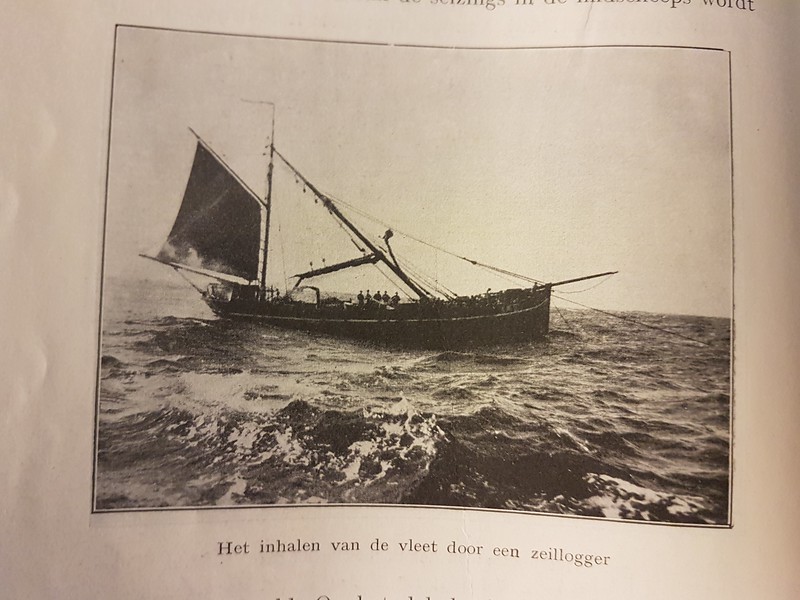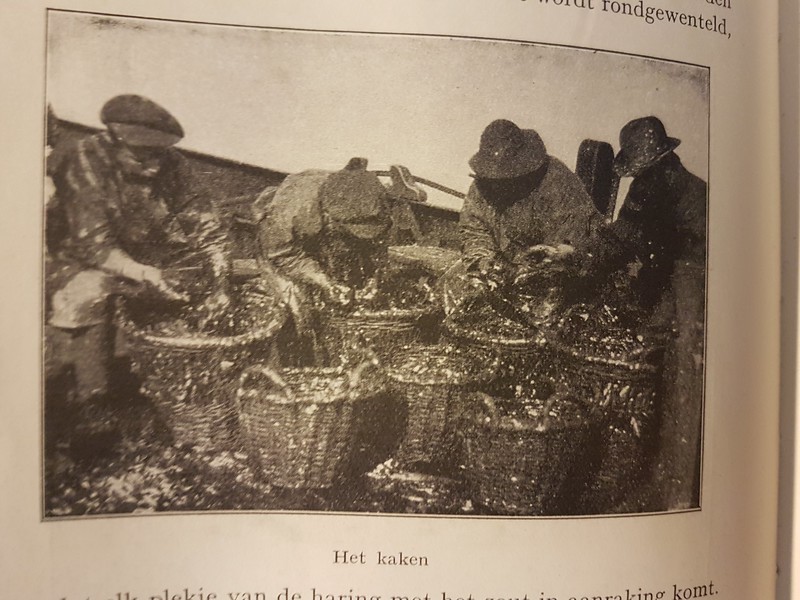I have been building a number of modern fishing vessels with pleasure, using different types of plastic, but I also wanted to build a ship with wood. It had to be a fishing ship and soon my eye fell on the Zeillogger (Saillugger or herringlugger). I also came in contact with someone who would like to have a logger's model and in the past two years we have searched for information, drawings and pictures. In the meanwhile I have enough material to start building.[/color][/font][/size]

The herringlugger in General
Until the end of the 19th century people used Bomschuiten (flatbottom ships) in Holland for fishin herring. But in the latter half of the 19th a new fishing vessel came up, the logger. The design came from France but was soon taken to the Netherlands after which the design was adapted to the fishery. It resulted in light, fast ships that could quickly come to the fishing grounds and quickly returned to the port. As a result, more fishingtime was gained and the shipowners and shareholders made more money. The sailoggers were used to fish for herring with driftnets (vleetnetten)
The Fleet Fishing
The vleet-fishery is a herring fishing that was operated from the end of May to December in the southern parts of the North Sea. Only this fishery started until the end of May because the herring had only been sufficiently developed for consumption (maatjes-herring) and in winter the herring left the North Sea. The vleet- fishing was performed with so-called Bomschuiten (until the end of the 19th century) and then with steam or sailluggers


The driftnet for this fishery are called a Vleet. This is a vertical curtain in the water and consists of 100 to 150 interconnected nets (31 meters long and 16 meters high).
These nets are connected to a long cable, called the Reep to which floats (Breels or Scottish blowing) are attached to keep the net floating. The "Reep" is attached to the ship at the end. The net has meshes that are slightly smaller than the herrings head. When the herring swims in the net, he stays stuck in the net through his gills and can not go away anymore.


The Vleet is turned overboard in the afternoon, which takes about 1.5 hours. The Vleet will then remain in the water for a few hours until midnight and is then hauled in and the herring goes in bins on the deck. This takes 4 to 5 hours. After this the crew takes the herring for gutting, salting, putting in tubs and storage. After cleaning the ship, it is often time to turn off the vleet again. They worked for 6 or 7 days a week and trips lasted for 7 weeks.
The KW140, Wilhelmina VII
The Wilhelmina VII was a steel saillogger with the hull made of steel. The rest of the ship is made of various types of wood. Of the same type, several were built for different shipping companies.
The lugger was built in 1912 at the shipyard Gebr. Boot at Leiderdorp on behalf of the fishingcompany Gebr. The Dulk te Katwijk aan Zee. Cost was Fl. 15,200 (Dutch guilders) and presumably she got in line with the shipping company in 1914.

The logger is rigged about 38 meters long. The length of the keel is 25 meters and the overall hull length is 28 meters. The height is about 25 meters. Width is 6.6 meters.
Tragedy
About the history of the Wilhelmina VII, an ink-black veil hangs for the family of the sailors with much uncertainty, sadness and misery.
On 16-2-1918, Wilhelmina VII left under the command of Captain Arie den Hollander with 5 other crew members heading towards the Doggersbank for herring fishing. Since that date nothing is ever heard from the ship and its crew. It was assumed that the ship has hit a mine and perished.
Later it became apparent that Wilhelmina VII was destroyed with all crew on 19-2-1918 by the U-Boote UB-64 under the leadership of Kapitšnleutnant Woldemar Petri (1883-1951).
Much is unknown about reason for the sinking of the Wilhelmina VII, as the captain's log clearly states that he recognized her as a Dutch fishing vessel and Wilhelmina VII had the words HOLLAND on SB and BB. Perhaps the steel hull caused the captain to be confused or there are other things that play along, but it will always remain unclear.
The names of the killed crew are. Skipper Arie den Hollander (39), mate Willem van der Plas (33), sailor Jacob den Hollander (37), sailor Jan Zwanenburg (34), sailor Jeroen den Hollander (43) and oldest Arie den Hollander (16)
One of the crewmembers is the grandfather of the man I will build this model for.

The model is built in scale 1/25, giving a hull-length of 113cm and a total length of 152cm and a height of 100cm. This will give me a lot of space to get a high level in details and make things work.
I will make the hull of fiberglass and polyester and the rest of the ship will be full of oak and brass.
For building, I base myself on the original buildingplans I found and photos of other sailloggers from that time.
Particularly I will use information and photos of the only remaining saillogger VL-92 de Balder that has been very precisely restored and brought back into old state.
 Author
Topic: KW140 Wilhelmina VII Herringlugger 1914 scale 1/25 (Read 10528 times)
Author
Topic: KW140 Wilhelmina VII Herringlugger 1914 scale 1/25 (Read 10528 times)



